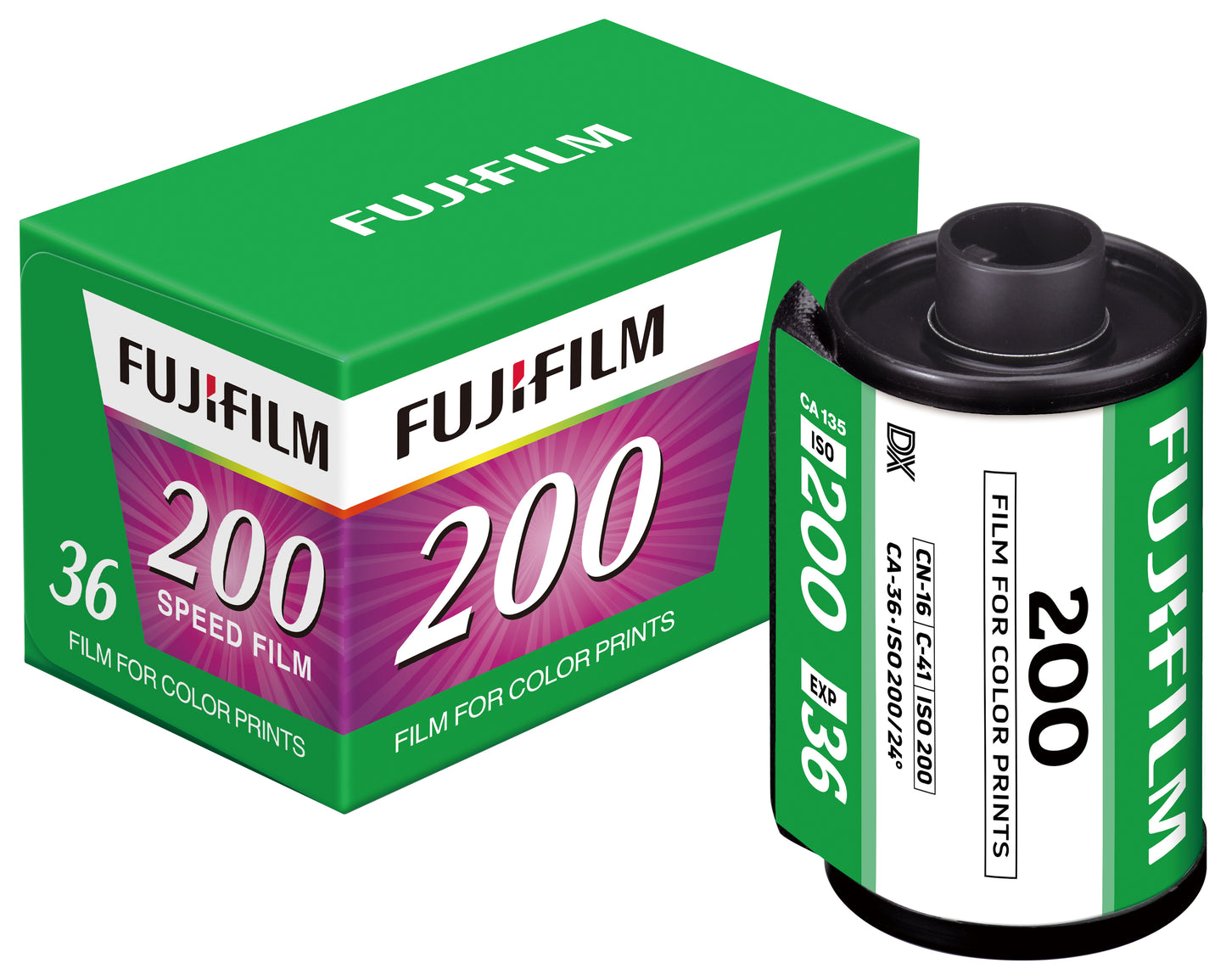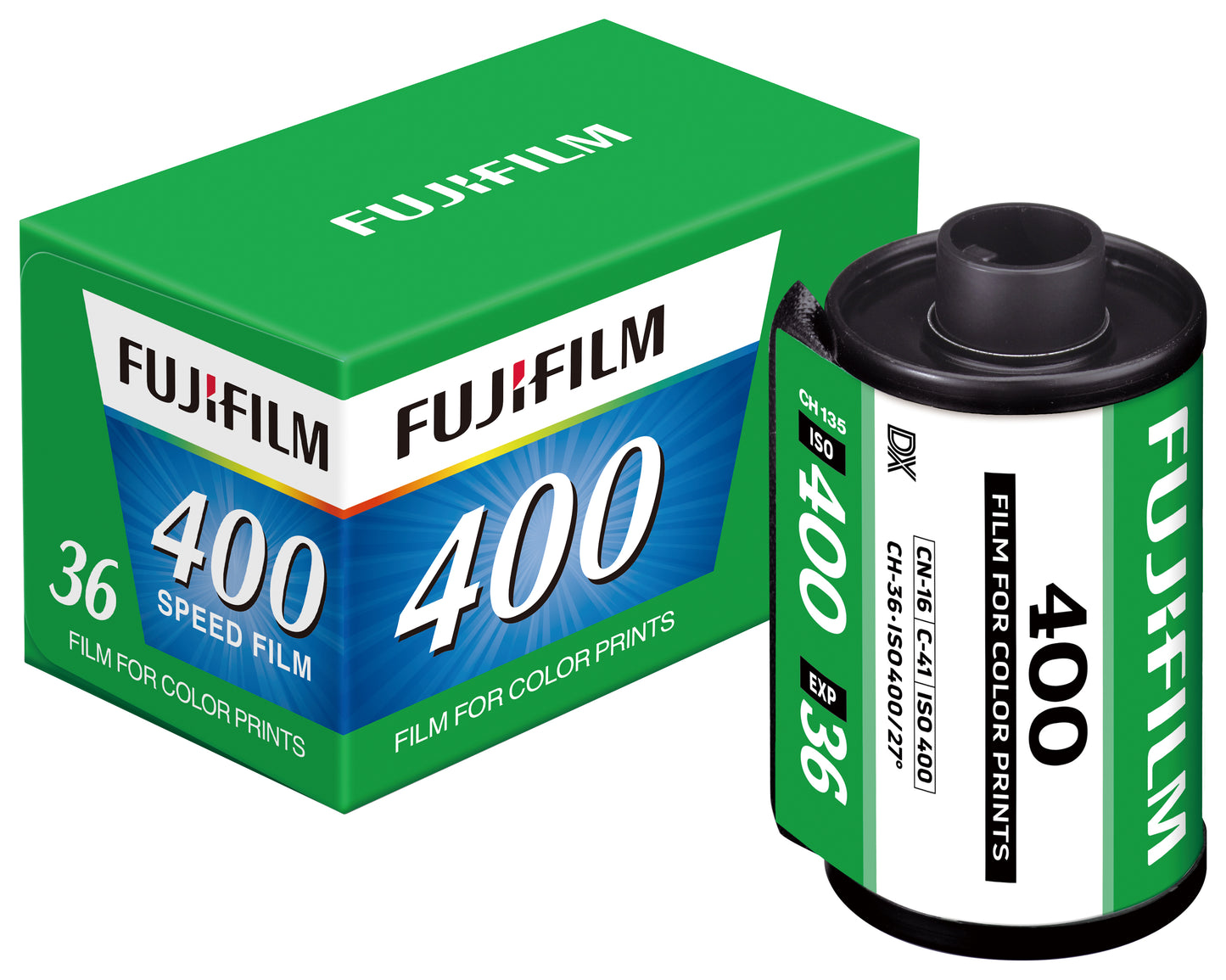

Features & Benefits
| Fujifilm 200 | Fujifilm 400 | ||
| Excellent Grain Quality | Fine grain for a high-speed film, providing no loss of image quality even in large-size enlargements | Y | Y |
| Wide Exposure Latitude | Stable results can be expected under a variety of photographic conditions | Y | |
| High Speed and Wide Exposure Latitude |
High sensitivity that allows images to be captured even under insufficient light conditions | Y | |
| Excellent Skin Color Reproduction | Smooth, beautiful and naturally depicted skin tones | Y | Y |
| Excellent Sharpness | Extremely sharp depiction of all aspects of the subject, from overall form to textural details | Y | Y |
| Excellent Gray Balance | Precisely maintained gray balance throughout, from the brightest highlights to the deepest shadows | Y |
Storage & Handling
Handling Unprocessed Film
Handling
- Expose film before the expiration date indicated on the film package and process as soon as possible after exposure.
- Roll film should be loaded and unloaded quickly and away from direct sunlight.
- Film loaded in cameras should be exposed and processed promptly.
- X-ray inspection machines used to inspect checked-in baggage at airports can cause fogging of film. Put both exposed and unexposed film into carry-on baggage (preferably in a transparent plastic bag or a net bag that allows the film to be seen). Because of the increasing number of airports using strong X-ray machines for carry-on baggage, it is recommended that you remove film from your carry-on baggage and request a visual (manual) inspection of your film.
- Film fogging may occur near X-ray equipment used in hospitals, factories, laboratories and other places where radiation is used. Always keep film away from sources of radiation.
Storing Unprocessed Film
Storage
Storing exposed or unexposed film under hot and humid conditions may adversely affect the speed, color balance and physical properties of the film. Although it is best to store film at a low temperature, for practical purposes, film should be stored as follows:
Short-term Storage: Store at 15°C or below
Long-term Storage: Store at 0° or below
- New building materials, newly manufactured furniture, paints and bonding agents may produce gases which could affect photographic film. Do not store film, lightproof boxes containing film or cameras or film holders loaded with film near these materials.
- Film should be sealed in plastic bags* prior to cold storage When taken out of cold storage, film should be allowed to reach room temperature before opening by letting it stand over 3 hours (for refrigerated film) or over 6 hours (for frozen film). Opening film while it is still cold may cause condensation to form on the film surface, causing color changes or the emulsion to become more susceptible to scratches.
*Polyester, polystyrene, polyethylene, polypropylene, etc.
Looking After Your Processed Film
1. Color negative film should be inserted into sleeves for storage. Furthermore, it is recommended that film, as well as prints, be placed into non-airtight* containers made of paper, plastic**, or metal designed for the storage of photographs.
* To prevent film base (especially TAC base) decomposition, it is essential that the container or case be allowed to air out during one dry day each year.
** Polyester, polystyrene, polyethylene, polypropylene, etc.
2. Processed film should be stored at a place as far away as possible from high temperatures, direct sunlight and other strong light and direct illumination. The following conditions are not desirable for the storage of film and should be avoided in the case of long-term storage:
- Storage in a closet lying against a wall that is exposed to cold, outside air (where condensation may form).
- Storage in an attic or on top of a closet or cabinet near the ceiling (where high temperatures may form).
FUJIFILM, QuickSnap and Moments worth waiting for. are registered trademarks or trademarks of FUJIFILM Corporation.












